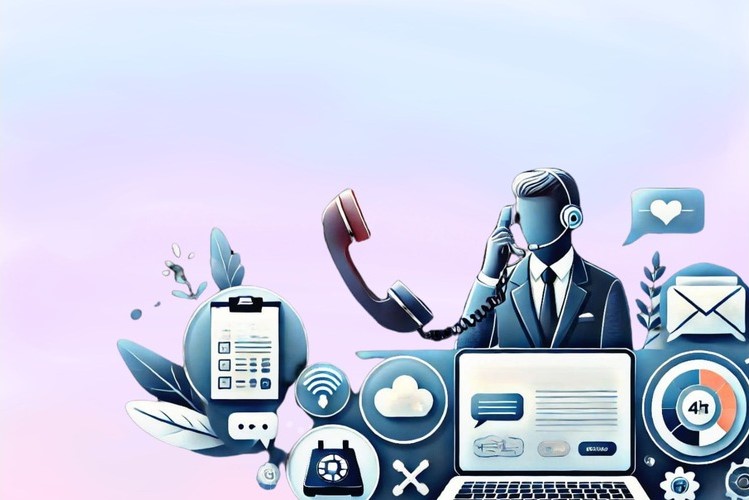The Impact of Bad Customer Experience on Businesses

Customer experience is one of the most important factors that can make or break a business. While exceptional service can convert one-time buyers into loyal, repeat customers, poor service can lead to significant setbacks. Knowing the impact of bad customer experiences and how to prevent them is crucial for any organization aiming for lasting success.
What is Bad Customer Experience
Bad customer experience occurs when businesses fail to meet customer expectations throughout their journey. Common issues include:
- Long wait times
- Rude or unhelpful interactions
- Repetitive questioning
- Unresolved problems
According to Consumer Reports, 75% of shoppers are frustrated by poor customer service interactions, which significantly detracts from their overall experience. Additionally, 66% of consumers find long hold times aggravating, and around 64% feel frustration when their issues go unacknowledged. These statistics underscore the urgent need for businesses to address these common service issues to enhance customer satisfaction and loyalty.
Consequences of Bad Customer Experience
The consequences of a bad customer experience extend beyond immediate dissatisfaction. Negative experiences can quickly tarnish a company's reputation. In today's digital world, dissatisfied customers share their experiences on social media and review sites, spreading negative word-of-mouth and deterring potential customers. Poor experiences can drive customers away; studies show that many customers will switch to a competitor after just one bad experience. This loss directly impacts revenue and growth. Additionally, unresolved issues and inefficient support can result in substantial financial losses, with businesses losing an estimated $62 billion annually due to poor customer service.
Additional Consequences and Considerations
Beyond immediate impacts, poor customer experience has deeper, long-term repercussions:
- Customer Loyalty: Consistently poor experiences can erode trust in a brand, making customers hesitant to engage again. This is particularly damaging for businesses relying on repeat customers and long-term relationships.
- Online Reputation Damage: In today's interconnected world, customer complaints can easily go viral. A single negative experience shared widely on social media can damage a brand's reputation significantly, influencing potential customers' perceptions and decisions.
- Missed Referral Opportunities: Satisfied customers are likely to refer friends and family to a business. Conversely, those who experience poor service are unlikely to recommend the brand, resulting in missed opportunities for new customer acquisition through positive word-of-mouth.
- Employee Turnover: Poor customer service environments can lead to higher employee turnover rates. Frustrated and demoralized employees are more likely to leave, leading to increased recruitment and training costs and further instability in service quality.
- Regulatory Scrutiny: In some industries, consistent customer complaints can attract regulatory attention. This can lead to fines, sanctions, and further damage to the company's reputation and financial standing.
Real-Life Examples of Bad Customer Experience
Understanding specific instances of poor customer experiences can provide valuable insights into what to avoid. Here are some common scenarios that highlight the pitfalls of bad customer service:
- Disrespectful or Dismissive Interactions: Imagine calling a support line only to be met with a rude or indifferent agent. This is one of the most disliked forms of poor customer experience. Such interactions leave customers feeling undervalued and frustrated.
- Ineffective Assistance: When support agents fail to resolve issues effectively, customers often leave interactions feeling confused and dissatisfied. Proper training and clear communication can prevent this, ensuring agents can assist customers efficiently.
- Repeated Contacts for the Same Problem: Customers detest contacting a company repeatedly to resolve the same issue. Empowering representatives to address problems promptly and giving them decision-making flexibility can significantly improve first-contact resolution rates.
- Long Hold Times: Nobody likes waiting on hold for extended periods. Customers expect timely assistance, and long hold times can damage their perception of your company. Offering callback options and using technology to streamline processes can help reduce wait times and enhance the overall customer experience.
- Repeated Information Requests: Asking customers to repeat their information multiple times is not only frustrating but also shows a lack of organization. Maintaining comprehensive records of customer interactions and utilizing CRM systems can prevent this issue, making the process smoother and more efficient for both parties.
Strategies to Enhance Customer Experience
To mitigate the risks associated with bad customer experience, businesses must implement proactive strategies:
- Invest in Training and Development: Continuous training programs for all employees are essential. These programs should focus on communication skills, problem-solving techniques, and empathy to ensure that employees are well-equipped to handle a variety of customer interactions.
- Utilize Technology: Modern customer experience technology, such as AI-driven chatbots and CRM systems, can streamline customer interactions, reduce wait times, and ensure that employees have access to complete customer histories. This leads to more personalized and efficient service.
- Foster a Customer-Centric Culture: Cultivating a company culture that emphasizes customer satisfaction can make a significant difference. Every team member, from top management to front-line employees, should understand the importance of delivering exceptional experiences and be empowered to contribute to this goal.
- Implement Feedback Mechanisms: Regularly collecting and analyzing customer feedback helps identify pain points and areas for improvement. Businesses should use surveys, social media monitoring, and direct customer interactions to gather valuable insights and take action based on this feedback.
- Empower Employees: Allowing employees to make decisions independently can improve response times and customer satisfaction. Employees who feel trusted and empowered are more likely to go the extra mile to resolve customer issues effectively.
- Engage on Multiple Channels: Providing support across various channels—phone, email, social media, live chat—allows customers to reach out through their preferred method. Omnichannel support strategies can enhance accessibility and convenience for customers.
- Monitor and Adapt: Continuously monitoring customer experience performance and adapting strategies based on evolving customer needs and expectations is crucial. Businesses should stay agile and responsive to maintain high service standards.
Transforming Customer Experience into a Competitive Advantage
Bad customer experience can have far-reaching consequences, from damaging your reputation to driving customers away. By understanding the common pitfalls and implementing proactive measures, businesses can enhance their customer experience, build loyalty, and secure long-term success. Prioritizing excellent customer experiences not only benefits customers but also strengthens the overall organization, setting the stage for sustained growth and competitive advantage.
Investing in the right people, training, and technology while fostering a customer-centric culture can transform customer experience from a potential liability into a key competitive advantage. By addressing these critical areas, businesses can avoid the pitfalls of bad customer experience and create a foundation for long-term success and customer loyalty.
Want to dive deeper into the world of customer experience? Check out these two compelling reads:
-
The Great CX Dive: Why Customer Satisfaction Is in Free Fall: Explore the reasons behind the decline in customer satisfaction and learn actionable strategies to turn the tide.
-
Retail Reality Check: In-Store Experiences Fall Short of Shopper Expectations: Uncover the gaps in in-store experiences and discover how to meet and exceed shopper expectations.
Click the links to continue your journey towards mastering customer experience and ensuring your business stays ahead of the curve!




